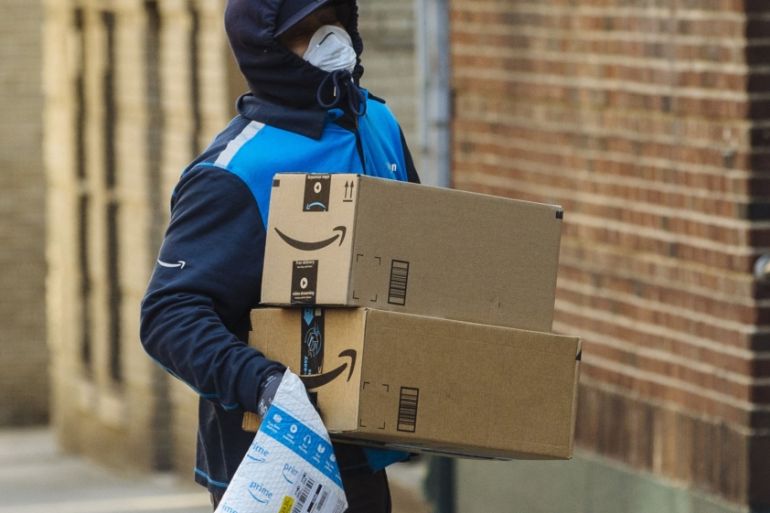Amazon predicts shrinking profit on pandemic expenses
Amazon says it may incur a loss because it’s spending more to keep operations going during the coronavirus outbreak.

Amazon.com Inc. saw its profit shrink and predicted it may incur a loss in the current quarter due to increased spending to keep logistics operations running smoothly during the coronavirus pandemic.
Operating income could range from $1.5 billion to a loss of $1.5 billion in the quarter ending in June, the company said Thursday in a statement.
Keep reading
list of 4 itemsMexico’s teachers seek relief from pandemic-era spike in school robberies
‘A bad chapter’: Tracing the origins of Ecuador’s rise in gang violence
Why is the US economy so resilient?
“Under normal circumstances, in this coming Q2, we’d expect to make some $4 billion or more in operating profit,” Chief Executive Officer Jeff Bezos said in the statement. “But these aren’t normal circumstances. Instead, we expect to spend the entirety of that $4 billion, and perhaps a bit more, on Covid-related expenses getting products to customers and keeping employees safe.”
Sales increased 26% to $75.5 billion during the period ended March 31, the Seattle-based company said. Net income was $5.01 per share. Analysts, on average, estimated $73.7 billion in revenue and earnings of $6.27 a share, according to data compiled by Bloomberg.
Wall Street expects the coronavirus pandemic to accelerate long-term trends in favor of Amazon and online shopping, while further weakening brick-and-mortar stores. The company, which has prioritized stocking essential goods, is among a few large retailers that have continued to operate relatively normally during the crisis.
Amazon had warned that a hiring binge beginning in mid-March and a temporary $2 an hour hazard pay raise for the company’s hundreds of thousands of warehouse workers would ultimately cost some $700 million.
Amazon shares declined about 4.5% in extended trading after the results. The stock closed at $2,474 in New York and has jumped more than 33% in 2020.
“The big-spending promise is clearly weighing on shares, though I think that reinvestment is an important step for customer satisfaction/retention as other competitors have stepped up their delivery/fulfillment capabilities,” said RJ Hottovy, an analyst at Morningstar Inc. “Sales are likely to outperform, but the benefit to margins will be offset by other incremental costs.”
Sales in Amazon’s physical stores category, which is almost entirely Whole Food Market stores, rose 8% to $4.6 billion in the quarter, the largest increase since Amazon bought the organic grocer in 2017. That tally doesn’t include online sales from Whole Foods stores, which surged in March as people stocked up and overwhelmed Amazon’s food delivery infrastructure.
Amazon’s fulfillment costs surged 34% to $11.5 billion from the period a year earlier. Shipping costs rose 49% to $10.9 billion.
Amazon Web Services, the cloud computing unit that in recent years has accounted for most of the company’s operating income, posted sales of $10.2 billion, up 33%, and just below analysts’ estimates.